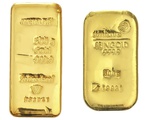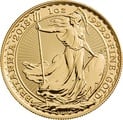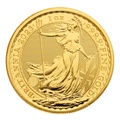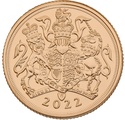What does carat mean?
Given its numerous uses and meanings it is perhaps little surprise that we are often asked what carat actually means. There are a few different meanings for the term, that will depend on whether you are talking about gold or gemstones. Below then is a comprehensive guide to exactly what carat means when talking about gold, and why it is an important thing to understand.
At its simplest, carat is a measurement of purity when referring to gold, or a measurement of weight when referring to gems. It lets buyers know what to expect, and therefore how valuable an item is.
Carat or Karat
One of the most confusing parts when talking about carats is the multiple spellings and meanings behind the word. In the UK, carat is the word used exclusively, while in the US you may instead see the word karat being used.
In the UK and other countries, carat applies to both gold and gemstones. In the US, carat applies only to gemstones - when applied to gold it is spelled
karat
. This can often cause confusion, as an item could state carats, ct, karat, or even k - all ultimately meaning the same thing.
Carat meaning
Carat, when applied to gemstone, is a measurement or unit of weight. When you see a figure next to a gemstone it means you can work out how heavy the gem is.
In measuring gemstones, one diamond carat weight is one-fifth of a gram, or 200 milligrams. Carat diamond weight can be divided into smaller units of points. One point being a hundredth of a carat. A 50 point stone is, therefore, half carat and would weigh 100 milligrams.
Carat when referring to gemstones is internationally abbreviated to CT or ct, but as mentioned above this can also refer to gold purity. Carat measures the weight of a diamond and not the diamond size.
What does carat mean in gold?
As discussed above carats in gold means the purity of the item.
Because pure gold is extremely malleable, manufacturers such as jewellers generally mix or alloy precious metals with harder metals. Without knowing exactly how much pure gold an item contains it is difficult to arrive at its true value. Carat, when applied to gold, therefore measures the proportion of gold to other metals in an alloy. It shows the purity of gold or gold alloys and enables better evaluations to be made.
Below is a chart showing the five most common gold carat numbers you would likely see here in the UK.
Gold carat measures the proportion of pure gold to other metals as parts of 24. Pure gold is 24 carat gold. Nine carat is nine parts gold: the remaining 15 parts of 24 being composed of other metals.
Gold carat is abbreviated to CT or ct and in the US Karat is abbreviated to k.
Origin of 'carat'
In ancient times, gold and precious metals were weighed against carob seeds. The term 'carat' is derived from the Greek
kerátion / κεράτιον
, meaning 'carob seed'. After 1570 there is evidence that this weight also began to be used for pearls and gemstones.
Carob seeds, however, are not all identical and vary in weight. Because of this, before 1907 there were divergences from across national borders. In that year, however, at the fourth sexennial General Conference of the Metric Convention, an international carat standard was agreed. This set the modern carat weight at its current 200 milligrams.
Why is gold carat twenty-four parts?
The ancient Roman gold 'Solidus' coin is thought to have weighed 24 carob seeds. This association between the carob seed or carat and 24 parts is thought to be the reason for a gold carat being in the ratio of 24 parts.
Given 24 is neither particularly accurate, or easily divisible in the metric system, gold is more formally quoted in the fineness system, discussed in more detail below.
When is gold not gold
Pure gold is too soft for most practical uses. It follows, then, that when talking about gold items in truth we are referring to gold alloys. Certain alloys contain so little gold that they can no longer be called gold.
This minimum gold content varies by country. In the US, 10 carat is the legal minimum and 14 carat is commonly used. In France, the UK, Austria, Portugal and Ireland, 9 carat is the minimum that can be called gold. In Denmark and Greece it is even lower at 8 carat.
Fineness
As well as carat, another way of expressing the proportion of gold in an alloy is fineness. Fineness is an alternative decimal based system and shows purity in parts per thousand (millesimal). Fineness of 999.9 is pure gold, and is equivalent to 24 carat. By using a millesimal system this allows for a finer level of detail and accuracy, whilst also being easier to understand for percentages.
Other common UK fineness standards are:
| Carat | Fineness |
| 22 | 916 |
| 18 | 750 |
| 14 | 585 |
| 8 | 375 |
With the exception of coins and pure gold bars, in the UK any manufactured gold products weighing over 1g must be hallmarked with the items fineness.
- How To Buy Gold
- How to Buy?
- Payment Options
- Delivery Options
- Gold Storage
- Storage at Brink's
- Gold Investment Guide
- Why buy gold?
- Is gold a good investment?
- Why physical gold?
- Best time to buy gold?
- Gold bars vs coins?
- Gold vs Silver
- Gold - Silver Ratio explained
- VAT on bullion
- CGT on bullion
- Legal tender coins
- Top 5 Gold Investments
- Top 5 Silver Investments
- Gold vs ISAs
- Gold vs Buy-to-Let
- Gold vs FTSE 100
- Gold vs Bitcoin
- Where to buy gold?
- Why buy from us?
- Where to sell gold?
- Coin Shops
- Gold Price Forecasts
- Top 10 Gold Producers
- Top 10 Gold Reserves
- Gold Britannia vs Sovereign
- Britannia coin designs
- Sovereign coin designs
- Sovereign Mintages
- Sovereign mint marks
- British coin specs
- What is a proof coin?
- Royal Mint bullion
- The Queen's Beasts
- Royal Mint Lunar Coins
- Bullion Refiners
- British coin mints
- Krugerrands
- Gold Tola - India & Pakistan
- Bullion Index











